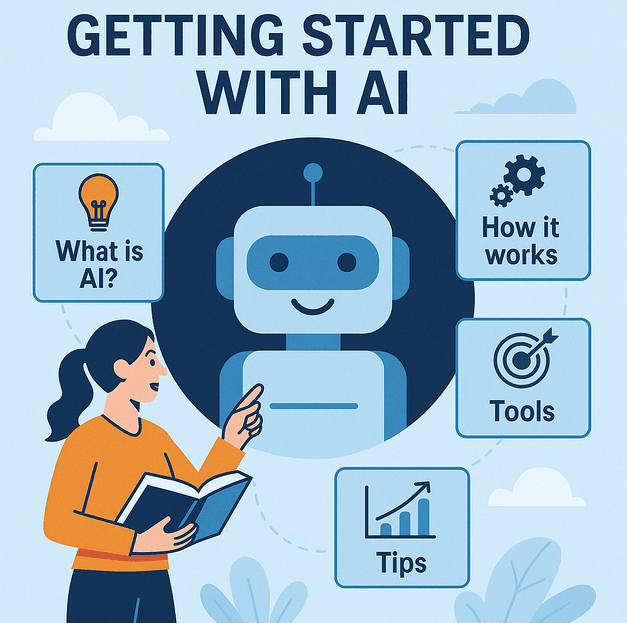Getting Started With AI in Social Housing

Understand what AI is, what it isn’t — and how to get started with confidence.
Artificial Intelligence (AI) can feel like a buzzword — futuristic, complicated, maybe even irrelevant to housing. But the truth is, AI is already here. It’s reshaping how services are delivered, how decisions are made, and how housing providers meet tenant needs.
If you work in social housing and want to understand what AI actually means for you, this guide is for you.
🤖 What Is AI (and What Isn’t It)?
AI refers to machines or software systems that can simulate tasks typically requiring human intelligence — like recognising patterns, understanding language, making predictions, or automating decisions.
AI is:
- A tool to help humans, not replace them
- Trained using data (the better the data, the smarter the AI)
- Already part of many systems you use — like Google, email filters, or repair diagnostics
AI isn’t:
- A robot that takes your job
- Magic
- Always right (it relies on the quality of data and programming)
🏡 Why Does AI Matter for Housing?
Because housing is:
- Complex — full of moving parts like repairs, tenant support, lettings, finance, compliance
- Stretched — with growing demand, tighter budgets, and higher expectations
- Data-rich — but often with underused information
AI can help providers:
- Spot problems early (like predicting damp and mould risks)
- Respond faster (like chatbots for tenant queries)
- Make better decisions (like analysing sentiment in feedback)
- Save time and reduce manual work
🛠️ Common Types of AI in Housing
| AI Type | What It Does | Example Use Case |
|---|---|---|
| Natural Language Processing (NLP) | Understands and processes human language | Analysing complaints or survey responses |
| Machine Learning | Learns from data to make predictions or automate choices | Predicting rent arrears or repairs needs |
| Chatbots | Simulate human conversation | 24/7 tenant support on your website |
| Image Recognition | Analyses photos or video | Identifying mould from inspection photos |
| Predictive Analytics | Forecasts likely future events | Spotting homes likely to develop disrepair |
🚧 Common Myths (And the Truth)
“It’s too expensive.”
Many AI tools are affordable or already built into systems you use. Some even have free tiers.
“We don’t have enough data.”
You may have more than you think — housing management systems, survey data, complaints, and repairs logs are all sources.
“It’s only for big housing associations.”
Small and medium landlords are adopting AI too, often through partnerships or shared services.
“It’s risky and unregulated.”
Like any tool, AI needs responsible use — but when managed well, it can enhance compliance, not threaten it.
🧭 Where Should I Start?
- Start with a problem, not a product
What’s costing time, money, or tenant satisfaction? Focus on real pain points. - Get curious about data
What do you collect now? Where is it stored? Who uses it? - Talk to others
Speak to your peers, IT teams, or tech providers. Chances are someone’s already trialled something similar. - Try small pilots
You don’t need to launch a full transformation. Test a chatbot on one service line. Use sentiment analysis on a tenant survey. - Upskill gradually
Subscribe to blogs (like this one), attend events, or ask suppliers to explain their tools in plain English.
📥 Download Our All-in-One AI Cheat Sheet
Want a one-page guide that breaks down AI terms, tools, and tips for social landlords?
👉 Click here to download the free cheat sheet (PDF)
💡 Final Thought
You don’t need to be an expert to start using AI. You just need curiosity, a few clear goals, and the right guidance.
AI isn’t the future — it’s happening now. And with the right approach, you can use it to make housing services faster, fairer, and more tenant-focused.